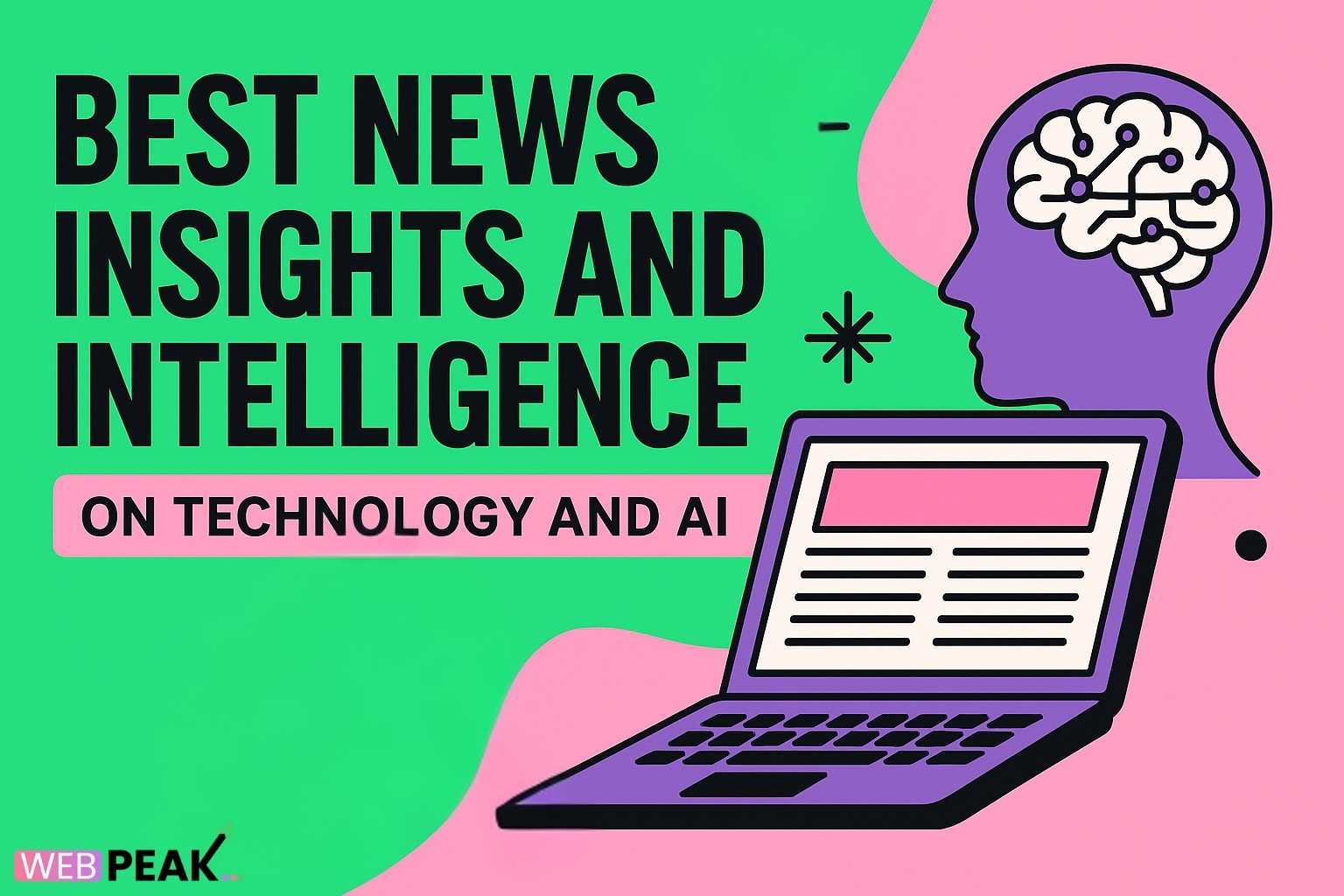Predictive Vs Prescriptive Analytics: A Complete Guide for Data-Driven Growth
Understanding the difference between Predictive vs Prescriptive Analytics is essential for any organization that wants to make smarter, data-driven decisions. Whether you’re running a digital marketing campaign, improving customer experience, or optimizing business operations, analytics sits at the center of modern strategy. In this article, we’ll explore how predictive and prescriptive analytics differ, how they complement each other, and how businesses can use both to achieve measurable results. Within the first stages of your analytics journey, learning how Predictive vs Prescriptive Analytics works helps you strengthen your decision-making frameworks and unlock opportunities for growth.
This guide also includes actionable SEO steps along with practical examples to help you apply the concepts. If you need expert assistance implementing analytics-driven strategies, WEBPEAK is a full-service digital marketing company offering Web Development, Digital Marketing, and SEO services.
What Is Predictive Analytics?
Predictive analytics involves using historical data, statistical algorithms, and machine learning techniques to forecast future events or trends. It tells you what is likely to happen based on past patterns. This form of analytics is essential for identifying opportunities, anticipating risks, and making proactive decisions.
How Predictive Analytics Works
Predictive analytics typically involves the following steps:
- Data Collection: Gather historical and real-time data from various sources such as CRMs, analytics tools, and internal systems.
- Data Cleaning and Preparation: Organize, normalize, and remove duplication to ensure meaningful outcomes.
- Model Selection: Choose algorithms such as regression models, decision trees, or neural networks.
- Training the Model: Feed historical data into the model to identify patterns.
- Validation: Test model accuracy using new or withheld data.
- Forecasting: Generate predictions for future behavior, trends, or events.
Examples of Predictive Analytics
- Sales Forecasting: Predicting next quarter’s revenue based on historical demand.
- Customer Behavior Prediction: Identifying which users are most likely to purchase or churn.
- Market Trend Analysis: Forecasting emerging trends in consumer behavior.
- Risk Scoring: Evaluating the likelihood of loan defaults or insurance claims.
- Buying Pattern Analysis: Anticipating seasonal or promotional purchase patterns.
Benefits of Predictive Analytics
- Improved decision-making through data-backed forecasts.
- Early detection of opportunities and potential risks.
- Optimized resource allocation.
- Enhanced personalization across marketing and customer experiences.
What Is Prescriptive Analytics?
While predictive analytics tells you what may happen, prescriptive analytics goes a step further by recommending exact actions to achieve a desired outcome. It answers the question: “What should we do next?”
Prescriptive analytics uses machine learning, optimization models, simulations, and advanced algorithms to determine the best course of action among many possibilities. It blends historical insights with real-time data and predictive modeling to produce actionable recommendations.
How Prescriptive Analytics Works
- Data Integration: Collect and unify internal and external data sources.
- Predictive Modeling: Use forecasting as a foundation.
- Optimization Algorithms: Run simulations to identify best-case actions.
- Scenario Planning: Analyze multiple what-if outcomes.
- Decision Automation: Implement systems that automatically suggest or execute smart decisions.
Examples of Prescriptive Analytics
- Marketing Optimization: Recommending the best content, channel, or bidding strategy to maximize conversions.
- Supply Chain Optimization: Suggesting ideal inventory levels to minimize cost and prevent stockouts.
- Financial Decision Guidance: Recommending investment strategies based on risk tolerance.
- Customer Personalization: Suggesting targeted offers to increase retention.
- Dynamic Pricing: Recommending price points for maximum revenue based on market demand.
Benefits of Prescriptive Analytics
- Provides actionable decisions instead of just predictions.
- Improves efficiency by automating complex decision processes.
- Helps organizations evaluate multiple strategies before acting.
- Enables real-time adaptive decision-making.
Predictive Vs Prescriptive Analytics: Key Differences
| Aspect | Predictive Analytics | Prescriptive Analytics |
|---|---|---|
| Primary Focus | Forecasting future outcomes | Recommending optimal actions |
| Question Answered | “What is likely to happen?” | “What should we do about it?” |
| Data Required | Historical data | Historical + real-time + predictive data |
| Techniques | Statistics, machine learning | Optimization, simulation, rules engines |
| Outcome | Probabilities and trends | Actionable recommendations |
| Complexity | Moderate | High |
How Predictive and Prescriptive Analytics Work Together
Businesses do not need to choose between predictive and prescriptive analytics. In fact, the most effective strategies use both. Predictive analytics offers insight into what might happen, while prescriptive analytics guides the actions needed to achieve the best results.
Examples of Combined Use
- Customer Retention: Predictive analytics identifies customers at high risk of churn. Prescriptive analytics recommends offers or actions to retain them.
- E-commerce Optimization: Predictive analytics forecasts demand. Prescriptive analytics suggests inventory adjustments.
- Marketing Campaigns: Predictive analytics estimates conversion likelihood. Prescriptive analytics recommends the best channel and messaging.
Why These Analytics Matter in Modern Business
Organizations today rely heavily on data. Without analytics, data becomes meaningless. Predictive and prescriptive analytics transform raw data into business intelligence and actionable insights.
Common Applications Across Industries
- Healthcare: Predicting patient readmission and recommending interventions.
- Finance: Forecasting financial risk and suggesting optimal portfolio adjustments.
- Retail: Predict ordering patterns and optimize product placement.
- Manufacturing: Predict equipment failure and prescribe maintenance schedules.
- Marketing: Forecast engagement and suggest content or targeting improvements.
SEO Insights: Using Analytics for Smarter Strategies
Digital marketing and SEO rely on accurate data. Predictive and prescriptive analytics can significantly improve campaign results by anticipating user behavior and guiding strategic actions.
How Predictive Analytics Helps SEO
- Forecast future keyword trends based on search patterns.
- Identify traffic dips before they happen.
- Predict user intent and content opportunities.
- Understand seasonal search behavior to optimize publishing schedules.
How Prescriptive Analytics Helps SEO
- Recommend the best content strategy for rankings.
- Suggest optimization actions for technical SEO issues.
- Guide decisions for backlink outreach prospects.
- Recommend the ideal mix of SEO, PPC, and content marketing activities.
Actionable SEO Checklist Using Predictive & Prescriptive Analytics
- Analyze historical keyword performance to forecast upcoming opportunities.
- Use predictive intent modeling to shape your content calendar.
- Leverage prescriptive tools that recommend specific fixes for site errors.
- Run A/B tests guided by analytics-driven predictions.
- Use user behavior models to identify high-value touchpoints.
- Forecast content decay and update pages before traffic declines.
- Model competitor performance to anticipate their moves.
- Use prescriptive insights to determine ideal publishing frequency.
- Predict content formats most likely to earn backlinks in your niche.
- Review data monthly to refine predictive and prescriptive models.
Frequently Asked Questions (FAQ)
1. What is the main difference between predictive and prescriptive analytics?
Predictive analytics forecasts what is likely to happen, while prescriptive analytics recommends what actions to take next based on those predictions.
2. Which type of analytics is more advanced?
Prescriptive analytics is more advanced because it requires predictive insights plus optimization algorithms to determine the best actions.
3. Do companies need both predictive and prescriptive analytics?
Yes. Predictive analytics identifies future scenarios, and prescriptive analytics helps businesses choose the best possible response.
4. Can predictive and prescriptive analytics improve SEO?
Absolutely. Predictive analytics forecasts trends and user behavior, while prescriptive analytics recommends specific SEO actions to improve performance.
5. What industries use prescriptive analytics the most?
Healthcare, finance, logistics, retail, and marketing commonly use prescriptive analytics due to the need for automated decision-making and optimization.
6. Is predictive analytics enough for business decision-making?
Predictive analytics provides insights, but prescriptive analytics provides actionable strategies. Using both together results in better outcomes.
7. How hard is it to implement prescriptive analytics?
It requires advanced tools, high-quality data, and machine learning models, but the long-term ROI is typically substantial.
8. What tools support predictive and prescriptive analytics?
Tools such as machine learning platforms, optimization engines, business intelligence dashboards, and AI-powered marketing tools are commonly used.
Final Thoughts
Mastering Predictive vs Prescriptive Analytics empowers organizations to not only understand what’s coming but also take strategic actions that boost performance, reduce risks, and accelerate growth. As businesses become more data-driven, the combination of predictive and prescriptive insights becomes invaluable across marketing, operations, finance, and customer experience. Whether you’re focusing on SEO, digital marketing, or enterprise decision-making, adopting both analytics approaches will place you ahead of the competition.





